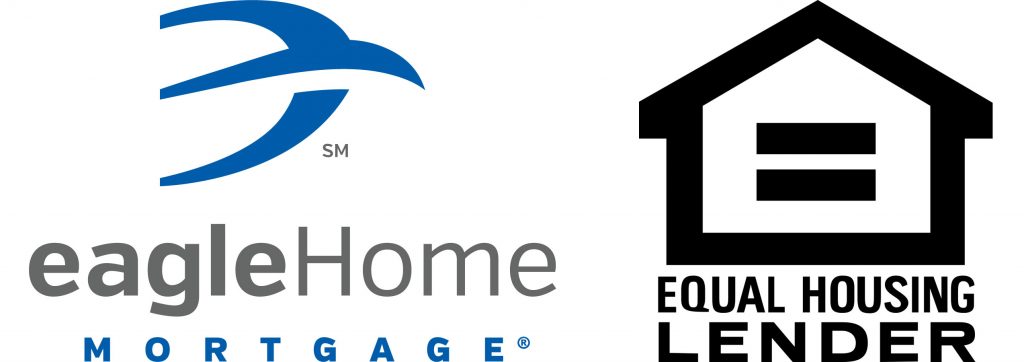This article is based on research by the author, who is not a financial, tax, or legal professional. This article does not reflect the views of Lennar Corporation or its affiliates. It is not intended to provide any financial or legal advice, and you should consult your own financial or legal advisor or a loan professional for more information about loans generally or your down payment assistance plan specifically.
Loans and down payment options vary. Contact a loan professional for more information and assistance regarding your loan options and the unique facts and circumstances surrounding your own financial situation.
Do I need to make a 20% down payment on a new home?
The short answer is no. The rule of 20% down is a myth. Then, why does everyone make such a big deal about it? Putting 20% down on a new home can reap certain benefits, which this article goes on to explain in the next paragraph. However, you could still buy your dream home with a smaller down payment, and we will look at the loan options and finance items that support this.
What are the benefits of putting 20% down on a new home?
By definition, a down payment is an upfront payment you make to purchase a home, and it is a percentage of the home’s purchase price. When considering your mortgage, a larger down payment means you borrow less money. Less money owed is less debt you need to worry over, and we can all appreciate that. Your down payment also shows a lender how much or less of a risk you are as a borrower. The lender assesses their lending risk by calculating the loan-to-value (LTV) ratio, and a bigger down payment can lower that number. A lower LTV ratio may then lower the interest rate on your mortgage, saving you money. Taking out a small loan with low interest can mean owing less on your monthly mortgage payments, and what you save can be applied to other expenses.
If you cannot afford to put 20% down on a new home, the lender could still approve your loan; however, they will likely charge you additional monthly fees for private mortgage insurance (PMI). PMI protects the lender if you stop making payments on your mortgage. Typically, you continue paying this fee until you accrue 20% equity in your property. Equity is another term for unencumbered ownership.
Side note: The impact your income, monthly debt, and down payment can have on your mortgage amount can be better understood with the use of an online home affordability calculator. Lennar has such a calculator, and because home affordability can vary by location, you can focus your search to a Lennar community for estimates on additional items like interest rates, tax rates, and cost of home insurance.
Knowing all this, it can be understood why the rule of 20% is often advised. If you can make a down payment of 20% or more, and be financially stable, the benefits are certainly reason enough to do it. But let’s take a step back now and consider why a large down payment may not be necessary or even right for you.
What is your financial situation?
If you have a fair amount of money saved up in your bank, but your annual income is relatively low, it might be better to make a large down payment so as to lower your monthly mortgage payments. If, on the other hand, you have very little savings, but a decent income, you could make a small down payment, and pay additional principal each month to reduce your loan balance and build equity faster. The issue then comes down to debt. Lenders look at your debt-to-income (DTI) ratio to decide if you even qualify for a loan. Typically, a ratio of 36% or less is ideal, but some loan options will accept higher. Consider this, though: if you have a DTI ratio of 50%, that means half of your monthly income will go towards your total monthly debt, including your mortgage and other housing expenses. If this is the case, you might consider paying off as much of your debt as you can before you apply for a loan. This way at least, if you want to make a bigger down payment, you can comfortably do so, knowing you eliminated some liabilities.
What are your (most common) loan options?
The rule of 20% down originated from the guidelines set forth by Fannie Mae and Freddie Mac, government-sponsored enterprises (GSE) that guarantee most U.S. mortgages. These GSEs buy mortgages – Fannie Mae buys them from commercial banks like Chase and Wells Fargo, while Freddie Mac buys them from smaller “thrift” banks – and then sell them to investors. To provide a guarantee, Fannie and Freddie require banks to follow certain rules and guidelines, one of which is a borrower must make a down payment of at least 20% or pay PMI.
There is a fairly new loan option guaranteed by Fannie Mae which we will highlight towards the end, but it is important for you to know that, when you shop for a loan, you have options. What follows here is a brief summary of each of those most common options, and you should consult your loan officer (or lending professional) for more information about these (and possibly other) loan options and which one is best suited for you.
Conventional loans are neither insured nor guaranteed by the government but are instead backed by private lenders. There are two types of conventional loans: (1) conforming loans, which conform to the guidelines set by Fannie and Freddie, and as such can be bought by the GSEs, and (2) nonconforming loans, which exceed the conforming loan limit, and are better known as jumbo loans. Jumbo loans finance the purchase of luxury homes and properties; so, unless you need a loan that exceeds the limits set by the Federal Housing Finance Agency – and in 2020, that amount is over $510,400, this is not a loan option you need to consider. Still, because we list these details for the subsequently mentioned loan options, we will put them here too: If a borrower qualifies for a jumbo loan, they can make a down payment as little as 10%. They must have a credit score of 700 or higher, a very low DTI ratio, and a reliable source of income – that last item is important if a borrower is going to pay off the extra closing fees and higher interest rate attached to this loan option.
Federal Housing Administration (FHA) loans are designed for borrowers with low-to-moderate incomes and lower credit scores. A credit score of 580 may qualify you to make a down payment of 3.5%, while a score as low as 500 requires 10% down. There is a matter of insurance with FHA loans: for the FHA to guarantee the loan, you (the borrower) must pay an upfront mortgage insurance premium (MIP) – or it can be rolled into your loan amount, and an annual MIP which is divided into your monthly payments. FHA mortgage insurance will last for 11 years or the life of the loan, depending on your down payment. If you put 10% or more down, it is 11 years; anything less is the life of the loan. The only way to get rid of FHA mortgage insurance is to refinance the mortgage into a non-FHA loan.
VA loans are available for active military members, veterans, and eligible surviving spouses through a mortgage program launched by the United States Department of Veterans Affairs. This loan option does not require a down payment or mortgage insurance. Interest rates are determined by participating lenders; however, VA loans typically have better rates than conventional loans. There is a funding fee, and it is a one-time upfront charge between 1.4% and 3.6% of the loan amount, depending on the down payment and whether a borrower has used the VA loan benefit before. Lenders can set different standards of eligibility regarding a person’s credit score and level of debt, but often they want to know a borrower will have enough residual income left over each month to pay for family expenses. Other eligibility rules vary between loan applicants. Servicepersons are eligible after 90 days of active service during wartime or 181 days of active service during peacetime. For veterans, a minimum term of qualifying active-duty service must be completed, with some exceptions. Spouses of military persons will have to consult a VA-approved lender if the serviceperson is active, deceased, or MIA.
USDA loans are backed by the U.S. Department of Agriculture. This may be the best loan option for anyone who wants to live in rural or suburban surroundings. If eligible, a borrower can get 100% financing from this loan, so a down payment is not needed. USDA loans come with mandatory mortgage insurance split into two parts: The first (i.e., the Guarantee Fee) is an upfront charge you pay at closing, and the second is an annual fee split amongst your monthly mortgage payments, and you pay the second for the life of the loan. The only way to be rid of these insurance fees is to refinance to another loan option.
In December 2015, the HomeReady™ mortgage program was created. Guaranteed by Fannie Mae, HomeReady™ loans accept a 3% down payment, lower credit scores (a minimum of 620), and a 50% DTI ratio. PMI is still in place till a borrower has 20% equity in the property. Higher interest rates usually apply to HomeReady loans, and there are often borrower income limits based on the area median income where the home is located. This is the only loan option that requires a borrower to complete homeownership education courses for loan eligibility.
Finally, a piggyback loan is a second loan that “piggybacks” a conventional loan to help finance a home purchase without a borrower having to make a full 20% down payment. Also known as a combo loan, this particular loan usually requires a borrower to put 10% down – some lenders will accept as little as 5% – and the loan covers the difference to make the 20% deposit, while the primary (conventional) loan finances 80% of the home’s purchase price. Most piggyback loans come with a higher interest rate, but there is no PMI, since you have 20% down with this second loan.
Can you apply for down payment assistance?
Down payment assistance can vary by location, so be sure to research your options and discuss its availability with your loan professional. This is a program often limited to first-time homebuyers, and it can be funded by federal, state, county, city, or nonprofit agencies. If you qualify for assistance, you will be awarded a set amount of money to cover your down payment or closing costs. The money can be given to you in the form of a grant, an interest-free loan, or a debt. Often, a loan or debt will have to be repaid if and when you sell the home or you finish paying off the mortgage.
In conclusion…
The idea that you need to make a 20% down payment to buy a new home is a myth. There are benefits to making a 20% deposit, but if you are unable to afford it, there are loan options and down payment assistance programs that could make your dream of homeownership a reality. If you would like to learn more, Lennar’s affiliated mortgage company, Eagle Home Mortgage, and its loan officers can answer your questions. Eagle provides the most appropriate loan options to suit your needs, and they offer a unique down payment assistance program for not only first-time buyers, but move-up buyers as well.
Additional Sources
Step by Step Guide: Types of Home Loans from The Mortgage Reports
Down Payments: How They Work, How Much to Pay by Justin Pritchard (January 2020)
On Conventional Loans…
What is a Conventional Loan? by Ben Luthi (September 2019)
Conventional Loan Requirements and Guidelines for 2020 by Beth Buczynski (January 2020)
On FHA Loans…
FHA Loans: Everything you need to know in 2020 by Deborah Kearns (January 2020)
On VA Loans…
VA Loans: What to Know by Hal M. Bundrick (December 2019)
VA Loans vs. Conventional Loans by Hal M. Bundrick (December 2019)
VA Loan Requirements for 2020 by Hal M. Bundrick (December 2019)
VA Loan Funding Fee by Hal M. Bundrick (December 2020)
On USDA Loans…
What is a USDA Loan? Am I Eligible for One? by Hal M. Bundrick (January 2018)
USDA Home Loans | Zero-Down Eligibility & Qualification by Tim Lucas (January 2018)
On HomeReady Loans…
What is a HomeReady Mortgage? by Chris Moon (May 2019)
On Piggyback Loans…
Piggyback 80 10 10 Loans Will Save You Money in 2020 by Tim Lucas (January 2017)
On Down Payment Assistance…
Down Payment Assistance: How to Get Help Buying a House by Barbara Marquand (September 2019)
What You Should Know About Down Payment Assistance by Rebecca Lake (August 2018)
DISCLOSURE:
Eagle Home Mortgage is an affiliate of Lennar Corporation. See Affiliated Business Arrangement Disclosure. Use of Eagle Home Mortgage is not required to purchase a home from Lennar.
This is not an offer in states where prior registration is required. Void where prohibited by law. Copyright © 2020 Lennar Corporation. Lennar, the Lennar logo, Eagle Home and the Eagle logo are U.S. registered service marks or service marks of Lennar Corporation and/or its subsidiaries. NMLS #1058. Date 02/2020. NMLS #1058





